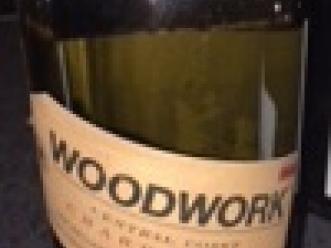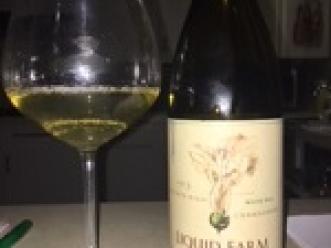In about 1820, a San Antonio winery was built in what is now Goleta, just north of the City of Santa Barbara. The wine was made predominately for the missions as sacramental wine, but the padres undoubtedly made a little extra on the side. The lonely adobe winery is still standing and nearly 200 years later, the wine industry in Santa Barbara County is thriving, in spite of the fluctuations of the economy, transitional markets, fickle consumers and inconsistent harvests.
When the first commercial grapevine plantings were made in Santa Barbara in the 1960s and 1970s, grape growers and vintners planted anything and everything, without regard to the end product. It has taken Santa Barbara nearly twenty years to understand its soil, its climate and what is best suited for the diverse growing regions and AVAs. Currently there are 64 different varieties of grapes planted throughout the county on 21,000 acres, according to Jim Fiolek executive director of the Santa Barbara County Vintners Association. Pinot noir and chardonnay are the most widely planted varieties, with chardonnay commanding an astounding 40% of that acreage while pinot noir comes in at 25%. However it's also important to note that of the roughly 90,000 tons of fruit crushed in 2007, "more than 50% was shipped out of county," Fiolek said, mainly to large northern California producers like Kendall Jackson and Meridian, among others.
Ryan Carr, winemaker at his namesake Carr Winery, and vineyard manager for eight different vineyards throughout the county, sees pinot noir on a steady climb. "There's still an increase in pinot noir plantings, specifically in the Santa Rita Hills," he said. Carr has seen nearly 3,000 acres of pinot planted since 2006. “There’s all this great land and plenty of underground aquifer water to support it,” Carr added. With the advent of the Santa Rita Hills official appellation, not to mention the bizarre Sideways phenomenon, pinot noir is hotter than ever. "The varietal is so proven in the region and is actually under planted," Carr said. Under planted or not, everyone is jumping on the pinot bandwagon. “Pinot has become the fad and everyone is drinking it.”
Pinot's cool climate cousin, chardonnay, though less respected among hard core wine lovers, remains a workhorse grape. "We're seeing chardonnay come back in a huge way," said Nicholas Miller, who, along with his family operates the venerable Bien Nacido Vineyard, as well as Solomon Hills Vineyard, and Central Coast Wine Services in Santa Maria. "We saw people backing away from that big oaky buttery style of chardonnay. But here in Santa Maria, our fruit can really stand up to the oak and shine through."
With a slightly warmer region, chardonnay retains a lot of its crisp acidity. As a grower, Miller's perspective is unique. The Central Coast Wine Services is used by dozens of small vintners, as well as medium sized producers who Miller rents space to. Santa Barbara needs an effective “tool box,” as he calls it, and pinot and chardonnay are the essential ingredients needed to build a dependable portfolio of wines. Additionally, consumers are becoming aware that these two varieties, if the label says Santa Barbara, will get consistently good wines.
But as good as pinot noir and chardonnay are, the real excitement is coming from a grape few have ever heard of. Rhone varietals such as syrah and viognier are doing well and even marsanne and roussane are gaining small footholds. But it's grenache that's quietly making a name for itself. "The Rhone varietals will be the next hot thing," Miller states with confidence. "Grenache is definitely one of the most exciting wines in Santa Barbara right now. Though it’s a small portion, it's positioned how pinot was ten years ago. It's becoming the winemaker’s wine of choice," Miller added. Though some, like Stephan Bedford of Bedford-Thompson Winery have been making grenache for nearly a dozen years. Bedford consistently produces a 100 percent grenache from fruit sourced in the Los Alamos Hills area.
With all the talk about Rhone varietals, one would think syrah would be the Rhone leader. But it's losing favor according to Ryan Carr, who called it a great "go-to" wine. “The marketplace has said we’ve had enough of syrah,” he said. Added Miller, “Syrah kind of had a false start.” Syrah comes in at a range of price points and produces exceptional fruit in both cool and warm climates. "But all of the sudden, everything shifted and pinot noir became the greatest thing on the planet. Pinot became the fad and everyone was drinking it," Carr said. The “go-to” wine may risk "been there done that."
And as one grape shows signs of distress, others inexplicably rise from the ashes. Yes, merlot is still hanging around. "One of our under the radar successes is merlot, which is in the dumps” Miller stated. “The Bozzano Bien Nacido is my favorite merlot outside of Napa," he added. There are increased plantings of merlot, cabernet sauvignon and other Bordeaux varieties in the heat charged Happy Canyon region of Santa Ynez. Fiolek has witnessed pinot grigio gain a higher percentage of new white grape plantings recently as Italian varietals are beginning to make a strong showing, including sangiovese and some tempranillo. Additionally, Fiolek sees younger wine drinkers, in the 21-30 age range, getting more involved and educated.
However, benchmark wines like chardonnay and pinot noir will continue to dominate, but there is plenty of room at the table for everyone. The days of planting anything everything are long gone, as they should be. The focus now is on producing outstanding and consistently recognizable fruit. "To be a world-class wine region we need to stick to what we're doing best," Miller said. “From our perspective, we’re seeing a really bright future.”





